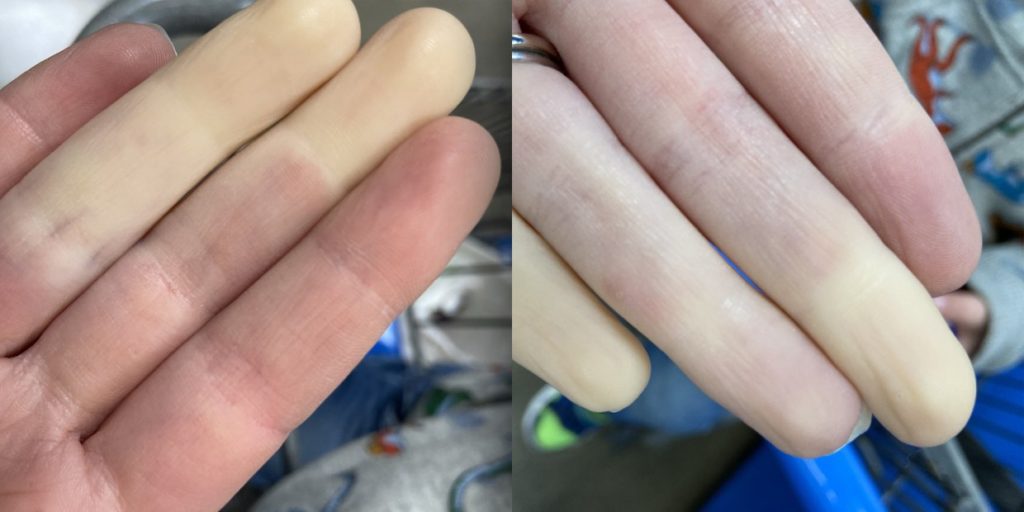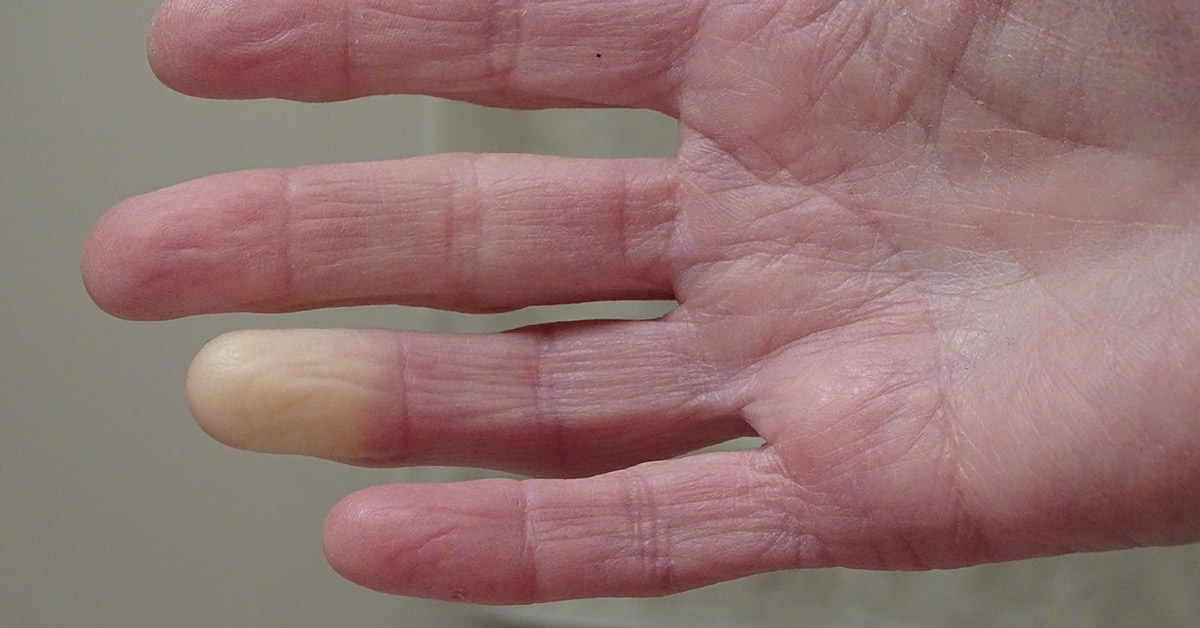Winter can be a tough season. It is long, dark, cold, and for many people, miserable. The short days with fewer sunlight hours can be depressing, and the frigid temperatures can force many people indoors for days on end. For some people, however, there is one more reason to hate the season: Raynaud’s Disease.
What is Raynaud’s?
Raynaud’s Disease is a condition in which some areas of your body, most often the fingers and toes, feel numb and cold as a response to cold temperatures. They will begin to change color, usually to a bright white, and sometimes they will begin to turn yellow and eventually blue [1,2].
The change in skin color occurs because the small arteries that supply blood to your skin narrow, which restricts blood flow to that area. This is called a vasospasm and can result in numbness, a prickly feeling in the affected area, and pain, especially as the area begins to warm up [1].
“With cold exposure, the body is trying to pull blood towards the core and it wants to supply blood to the core organ systems, like the heart and the lungs, so the extremities suffer in the process,” explained Dr. Ashima Makol, a rheumatologist at the Mayo Clinic in Rochester, Minnesota [1].
Rachel Smith’s Story
Rachel Smith experiences Raynaud’s attacks in her finger, toes, and ears. At first, her fingers turn deathly pale and she can’t feel anything, but eventually the pain sets in.
“It feels like the tingling when your hand falls asleep, but magnify that by a thousand,” said the 32-year-old from Sacramento, California [2].
It’s not just the outdoor cold that can induce an attack. Even seemingly harmless actions, like reaching into the freezer or holding a cold drink can cause her fingers to become white and painful.

“The ears are the worst,” said Smith. “If I know I’m going to be outside, and it’s cold or windy, I have to have a beanie. I’ve described it as someone putting a knife in my ear and turning it. It’s very painful.” [1]
Smith explained that she gets frustrated because many people don’t understand the condition, and tend to brush it off, telling her she is just extra sensitive to the cold.
“It’s a legit disease,” she emphasized [1].
Read: Know the difference between a heart attack, a cardiac arrest and a stroke. It could save a life
"I am one of 15-30 million who has Raynaud’s!" pic.twitter.com/W5fbsh5M7R
— 🎂 Rachel Smith 🎂 (@Twiggytwigzz) October 4, 2021
Treatment
Raynaud’s affects five to ten percent of Americans, but only one in ten people seek treatment. It is estimated that women are nine times more likely than men to have the condition, and although the disease isn’t disabling, it can affect your quality of life [3,4].
There is no cure for Raynaud’s, however, there are ways to manage the symptoms. People who are affected by the condition should be sure to cover their extremities before going outside. If they do experience an attack, soaking the affected area in warm water is usually effective at alleviating symptoms [3].
For more severe cases, there are some medications available, such as alpha-1 blockers, calcium channel blockers, and other vasodilators which can help control symptoms. A topical nitroglycerin ointment can also be applied to affected areas to help relieve symptoms by improving blood flow and cardiac output while decreasing blood pressure [3].
There are natural remedies that some with Raynauds have used. There is a lack of scientific support when it comes to their efficacy, however, some approaches can offer benefit.
Very rarely, nerve surgery called a sympathectomy may be required to decrease the frequency and severity of the attacks, however, the surgery is not always successful. Injecting certain chemicals that can prevent vasoconstriction can also be effective [3].
The National Heart, Lung, and Blood Institute recommends the following steps to avoid Raynaud’s attacks:
- Protect yourself from cold temperatures.
- Try to avoid emotional stress and learn ways to cope with the stress that you can’t avoid.
- Avoid certain medicines, substances, and activities that can trigger Raynaud’s attacks.
- Include physical activity as part of your healthy lifestyle and limit your use of caffeine and alcohol. If you smoke, quit. Also, try to avoid secondhand smoke [5].
As for Rachel, she just has to be extra-prepared during the colder months, and simply do her best to get through it.
“Winter is not my friend,” she said [1].
Related: 9 Signs Your Body Sends You When Something May Be Wrong
Sources
- “Raynaud’s disease.” Mayo Clinic.
- “What is Raynaud’s disease? The disorder that causes white or blue fingers, toes.” Today. A. Pawlowski. January 27, 2020.
- “What you need to know about Raynaud’s disease.” Medical News Today. Tim Newman. December 19, 2017
- Raynaud‘s Association
- “Raynaud’s.” NIH
Disclaimer: This information is not intended to be a substitute for professional medical advice, diagnosis or treatment and is for information only. Always seek the advice of your physician or another qualified health provider with any questions about your medical condition and/or current medication. Do not disregard professional medical advice or delay seeking advice or treatment because of something you have read here.

